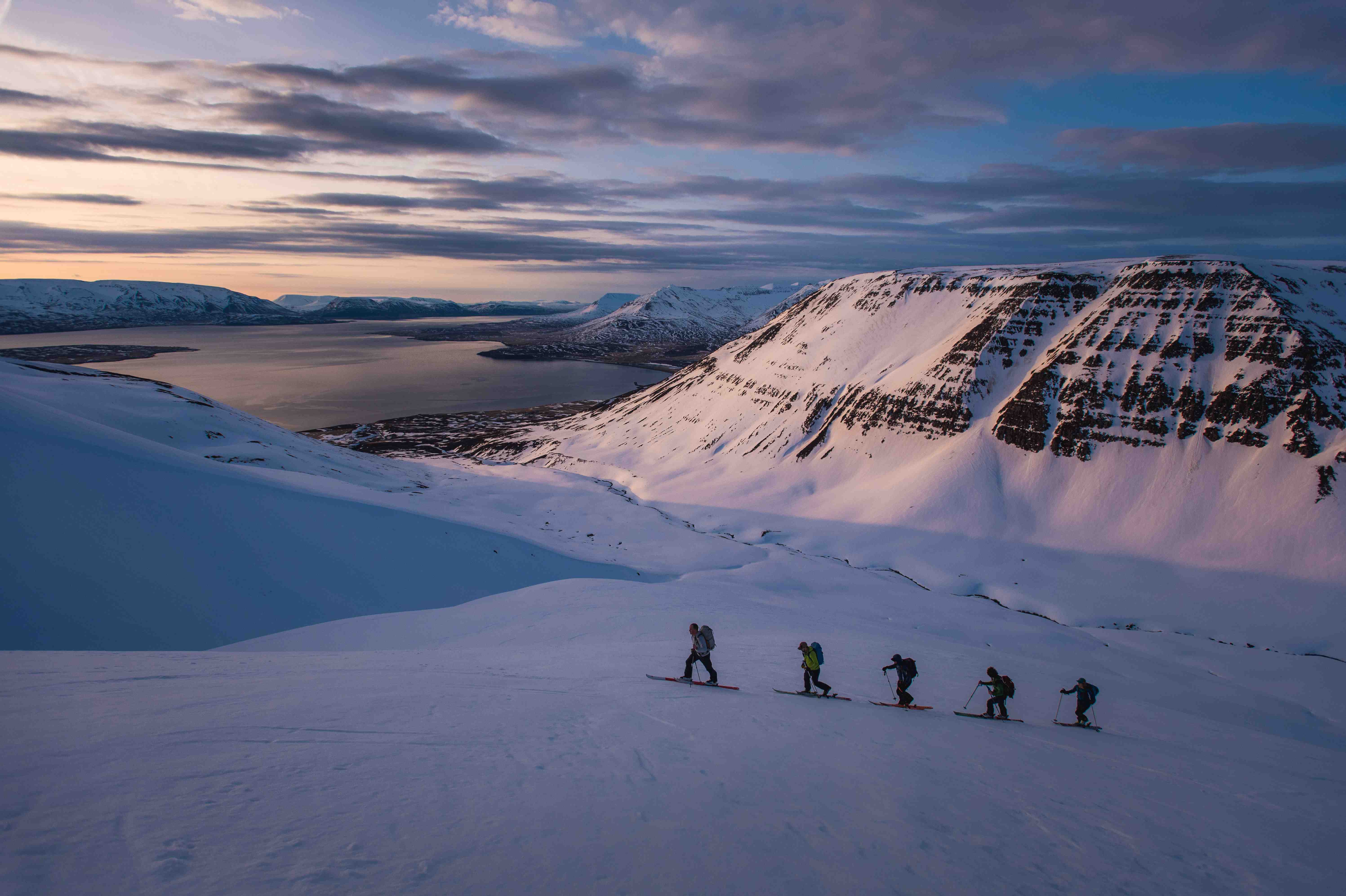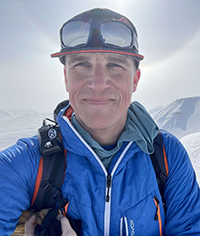Journeys North: Pursuing Winter Light on Skis
The following article was originally delivered as a lecture at the State University of New York at Plattsburgh as part of the HUMAN (flow) project in 2022.
Unlike Treebeard, most of my adult life has been spent on journeys north.
I always like going North, somehow it feels like I’m climbing higher up a mountain. And when I am climbing up mountains the cold air at higher elevations reminds me of The North. It reminds me of my childhood in western Canada and of expedition journeys at high latitudes and high altitudes in mountain regions around the world.
In The Journals Of A White Sea Wolf, author Mariusz Wilk remarks through one of his characters that in The North,
“...you can see the lining of the world here. …reality in the north is thinner than everywhere else, like a jumper worn out at the elbows, and the other world shines through it.”
One of the reasons I go on ski mountaineering expeditions is to see the light from other world's shining through, settling on fresh snow at northern latitudes. I don’t know if reality in the north really is thinner than everywhere else, but I do know that the light in winter rests gently on even the most austere and inhospitable environments. Barry Lopez captures this light in his book Arctic Dreams when he writes
“In a winter-hammered landscape the light creates a feeling of compassion …it is possible to imagine a stifling ignorance falling away from us.”
Winter light lies on snow, late on a January afternoon in southern Kyrgyzstan. Jerry Isaak photo.
However, defining The North is surprisingly difficult.
Canadian author Margaret Atwood asks,
“Where is the north, exactly? It’s not only a place but also a direction, and as such its location is relative: to the Mexicans, the United States is north, the Americans, Toronto is, even though it’s on roughly the same latitude as Boston. Wherever it is for us, there’s a lot of it.”
We’re in an art gallery in a region of New York State known as The North Country. We’re at a college that has branded itself in marketing campaigns as being “North of Ordinary.” Well, we might be in The North Country and our college may be North of Ordinary but we’re still a one hour drive south of Montréal. Even my childhood home in southwestern British Columbia is 5 degrees of latitude further north than The North Country. And rainy, temperate London, in the south of England is 7 degrees further “North of Ordinary”!
As Atwood points out - establishing the location of The North depends upon one's own location - and, I would add, one’s own culture. The idea of The North is a story - told and retold in all parts of the globe - shifting depending upon the perspectives of the storytellers.
As a result, narratives of The North drift on cultural currents like the magnetic north pole as it floats throughout the Canadian arctic in response to changes in the Earth’s outer core. The needle of our cultural compass points not to a universally recognized True North but rather is pulled towards a shifting cultural ideal North that is determined largely by our origins.
“The story of the North,” writes the German historian Bernd Brunner, “varies depending on the language in which it is told, the significance attached to it, and the types of yearning it evokes - often in competition with the other points of the compass and geographical horizons.”
As a ski guide and professor of Adventure Studies, points on the compass and geographical horizons are embedded in my professional practice and personal life. This winter [2022] I have journeyed north and skied to summits in the Central Asian Republic of Kyrgyzstan, and in several weeks I will again journey north towards mountain peaks on the Troll Peninsula of Iceland, just 25 miles below the Arctic Circle.
 Winter light, early morning above Eyjafjörður, north of Akureyri, Iceland. Brent Doscher photo.
Winter light, early morning above Eyjafjörður, north of Akureyri, Iceland. Brent Doscher photo.
When I’m on snow-covered mountains far from home and have climbed up for many hours to arrive at a summit or ridgeline, I usually grin with delight at the physical and mental exertion required to exist - even for a short while - in such challenging, remote environments.
And I look for the gently falling light in those winter-hammered landscapes.
It is then, far from home - seemingly isolated from society - that I am often reminded of a quote by the American writer Susan Solnit,
“History is carried in the mind to the remotest places to determine what one’s acts mean even there.”
On those journeys to high latitudes and high altitudes I carry with me not only a backpack on my shoulders but I also carry within me an idea of the North. It is an idea largely shaped by my origins and further influenced by my present experience of life in The North Country at a college that is North of Ordinary yet still one hour south of Montréal.
Jerry Isaak is an Associate Teaching Professor and the program lead for ski touring in the Adventure Studies Department at Thompson Rivers University in Kamloops, British Columbia. He was previously an Associate Professor and Chair of the Department of Adventure Sports & Expeditionary Studies at the State University of New York at Plattsburgh. He is an AMGA certified Ski Guide and has guided backcountry ski adventures in Iceland, Kyrgyzstan, Japan, and throughout the United States and western Canada.









